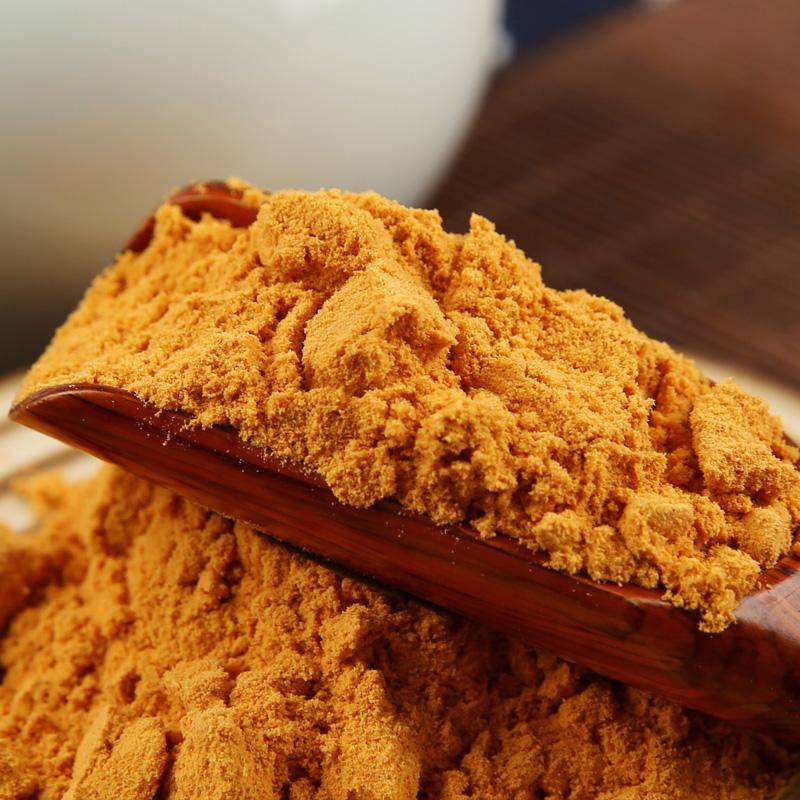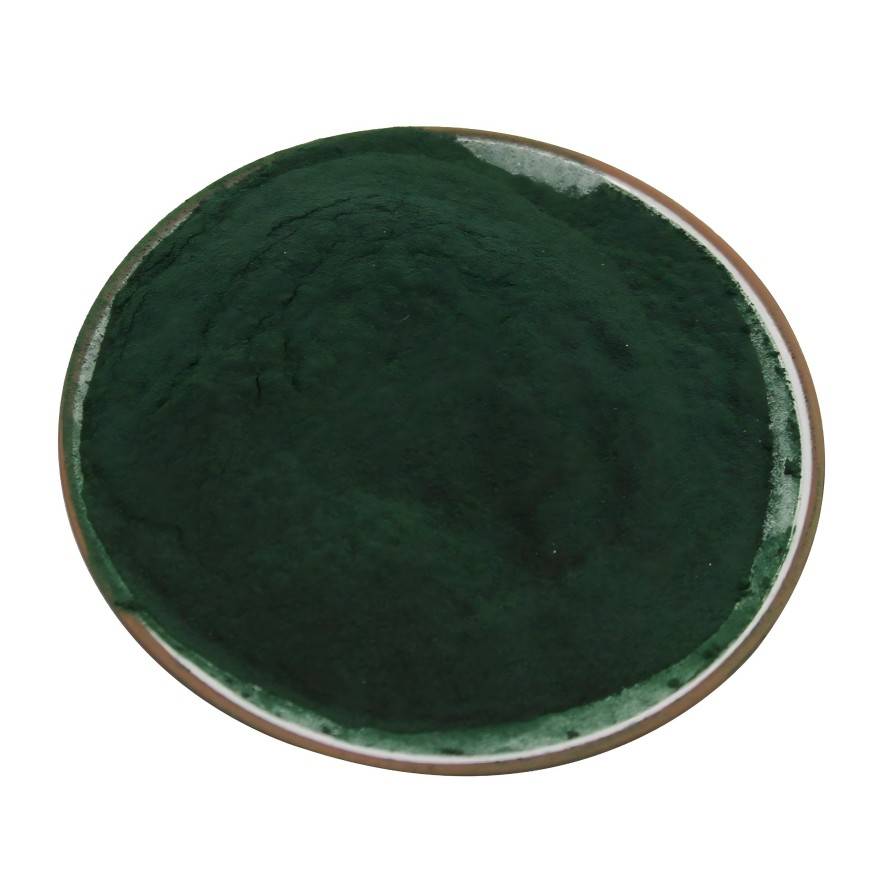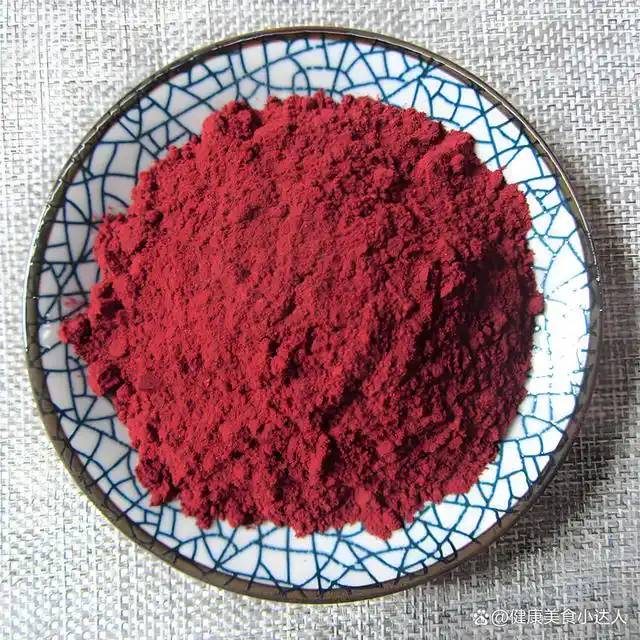自然の色の源は何ですか?
Pigments are divided into two categories: natural colors and synthetic colors. Natural colors have a long history of use. In ancient China, there were already records of Natural Colors being used as dyes for textiles, rice, wine, cosmetics, etc. Since the British chemist Parkin synthesized the first artificial color, aniline violet, in 1856, synthetic colors have played a very important role in people&#その明るい色、強い着色力、安定性と低コストのために39の生活。毒物学および分析化学の継続的な発展に伴い、人間は徐々にほとんどの合成顔料が人体に対してより毒性があり、催奇形性および発がん性であることを認識しています。安全性が明らかにされていない合成顔料については、世界各国で使用が厳しく制限されており、各国では多くの合成顔料が使用禁止リストから削除されています。このため、食品、化粧品、医療用顔料を抽出する際に、無毒で無害な天然物質を利用するのが新しいトレンドとなっている。天然の色は天然の物質に由来し、現在では主に植物の組織から抽出されますが、動物や微生物の色素も含まれています。天然の色は安全で健康的であり、多くは一定の栄養価と薬理学的機能を持っています。
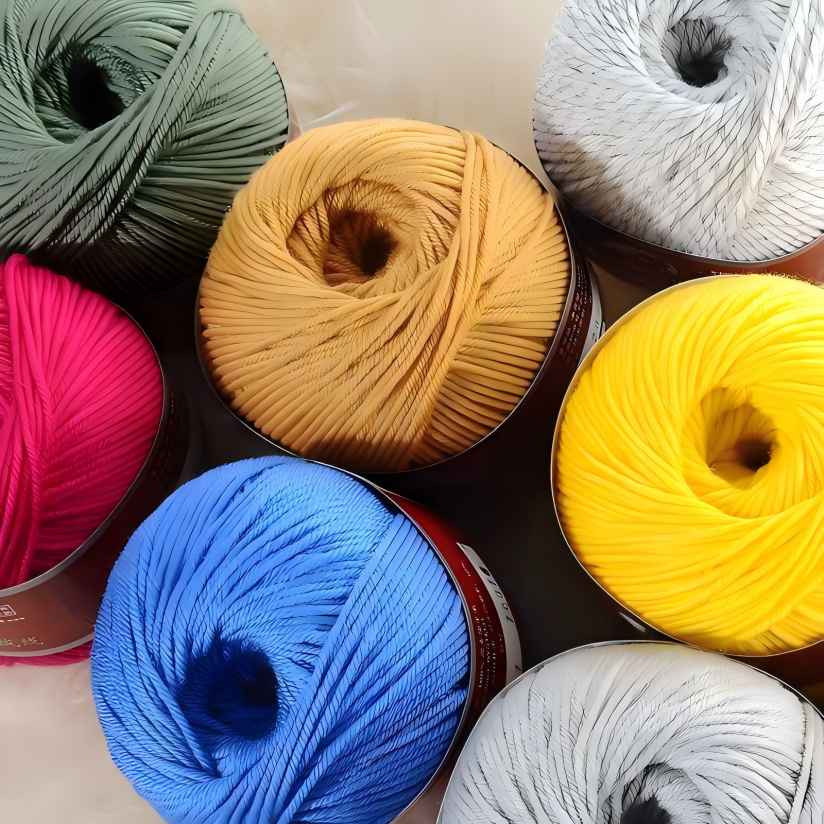
1天然色の抽出
自然の色は、3つの主要な方法で生産され、得られます:直接抽出、合成、バイオテクノロジー[1]。現在、天然色の大部分は、直接抽出を使用して生産されています。色素抽出法には、溶媒抽出、抽出、酵素法、圧搾、破砕、組織培養、微生物発酵、合成法などがある。以下では、一般的に使用されている有望な自然色抽出方法をいくつか紹介します。
1.1溶剤抽出
Solvent extraction is currently a commonly used method for extracting pigments from plants and animals. Solvent extraction methods include maceration, percolation, decoction and reflux extraction. Natural pigments extracted with water as the solvent can be extracted by maceration or decoction. The former is suitable for raw materials whose active ingredients are soluble in water, stable to moisture and heat, and not easily volatile. Organic solvents can be used for extraction, and reflux extraction can be used. The red pigment of sorghum is extracted by soaking in a 0.1% aqueous solution of hydrochloric acid for 2 hours, removing impurities and discoloration, then extracting with a 7% aqueous solution of ethanol at 40°C, followed by filtration, concentration and drying [2]. The yellow pigment in turmeric is extracted using organic solvents such as methanol, ethanol, acetone, ethyl acetate, etc. [3]. The shrimp shells were soaked in hydrochloric acid for 24 hours and then filtered. The residue was soaked in 95% ethanol, and the extract was concentrated to obtain a crude astaxanthin extract by distillation [4]. In comparison, the organic solvent extraction method is relatively inexpensive, has simple equipment, is easy to operate, and has a high extraction rate. However, the quality of some products extracted using this method is poor, the purity is low, there is an odor or solvent residue, and this affects the scope of application of the product.
1.2超臨界流体抽出法
現在、超臨界流体抽出(sfe)技術で最も一般的に使用される溶媒はco2です。超臨界二酸化炭素液抽出は、過去20年間に開発された新しいタイプの物質分離・精製技術です。これは、低粘度、ガスの高拡散と流体の高密度および溶解性の特性を兼ね備えています[5]。超臨界co2抽出プロセスが簡単で、エネルギー消費が少なく、抽出剤が安価で、抽出された製品は高純度、低溶媒残渣、毒性副作用がないという利点があるため、ますます評価されています。Rozzi。nlは、32 - 86°cの温度、13.7800 - 48.2686 kpaの圧力でトマト副産物からリコピンを抽出する研究を行った。その結果、86°c、34.4786 kpaで最大抽出率38.8%が得られた[6]。
超臨界co2流体抽出技術は、新しいタイプのグリーン分離技術ですが、不完全な技術、複雑で高価な設備、高い運転コストの問題から、この分野での抽出法の開発と適用は限られていました。
1.3マイクロ波抽出法
Microwave extraction is a method in which the sample and organic solvent are heated with microwaves in a sealed container to extract the substance to be measured from the sample matrix. It can extract multiple sample components in a short time, with a small amount of solvent and good reproducibility of results [7]. At present, there are continuous reports of the use of microwave technology for the extraction of pigments, involving substances such as alkaloids, flavonoids, and tannins. Wang Weihua et al. have studied the optimal process conditions for the extraction of リコピン using microwaves, which achieves an extraction rate of 95% and greatly reduces the extraction time. Compared with supercritical CO2 extraction, it is low in cost, requires less investment and has a high extraction rate [8]. Although the microwave extraction of natural colors technology has achieved some important results in experimental work, its application scope is limited due to its characteristics.
1.4酵素方法
植物色素を抽出する過程では、色素が細胞壁に囲まれていることが多く、ほとんどの植物の細胞壁はセルロースで構成されています。cellulaseβを破る使う-D-glucoside債を壊すことが植物細胞壁を起こして、が成分を抽出する。この原理に基づいて、植物成分を抽出する前に、酵素によるセルラーゼ分解を行い、抽出前に植物の細胞壁を分解し、有効成分の抽出率を高める。酵素が使用されているかどうかにかかわらず、抽出物の組成は同じであり、酵素分解が植物色素の組成を破壊しないことを示しています。
などの伝統的な抽出法を大きくまとめれば、粉砕、パリッ有機溶剤抽出仕上がり、胃食道逆流症などの弊害长い间の抽出の时代が高い、労働强度高エネルギー消費量原材料前処理で、破損されやすい、サーマルレシートプリンター構成貧しい絵の具で製品の純度、off-flavors、溶剤のカス、など自然の色に直接的な影響を及ぼす開発と応用している。
合成方法は、生合成が複雑であるため、多くの天然色物質は、人工的な制御下で化学的に合成することが困難です。この合成方法では、カロチンなどの天然顔料の化学組成や分子構造を持つ物質のごく少数を生産することができます。
近年、バイオテクノロジーの発展に伴い、バイオテクノロジーを利用して自然の色を作り出すことが可能になってきました。微生物発酵法を用いた青色素や赤酵母色素など様々な天然色素の製造が現実のものとなっている[10]。
2自然色の分類と適用
Natural Colours can be divided into three main categories according to their source: plant pigments, animal pigments and microbial pigments; they can also be divided into water-soluble pigments and fat-soluble pigments according to their solubility properties; 天然の色は、その機能成分によって次のカテゴリに分けることができます:カロテノイド;フラボノイド;アントシアニン;chlorophylls;そして、このようなウコン、赤酵母米、ビートルート赤、アリザリンレッド、ラック染料、シアノバクテリアなどの他の顔料。ここでは、代表的な天然色の生理機能と用途を紹介します。
2.1カロチノイド色素
カロテノイドは植物や微生物によって合成される天然色素である。これらはポリエン色素の代表であり、カロチンとキサントフィルの総称である。生物界に広く分布しており、これまでに600種以上が発見されています。カロテノイドは、その組成と溶解度によって、カロテノイドとキサントフィルの2つのカテゴリーに分けることができる。カロテノイドは、生理学的に活性な機能的抗酸化物質として国際的に認められている。それらは有効な一重項酸素急冷剤であり、ヒドロキシルラジカルを除去し、細胞および細胞膜の脂質と結合し、脂質酸化を効果的に抑制することができます。カロテノイドの大量摂取は、加齢に伴う前立腺症および加齢に伴う網膜黄斑変性を減少させる可能性がある[11]。近年、カロテノイドは、抗がん効果やアンチエイジング効果の面でも多くの新しい機能的価値を持つことが報告されています。したがって、カロテノイド色素は機能性食品添加物の一種であり、開発の展望は非常に広い。
2.2 Flavonoid顔料
フラボノイド色素は、植物組織に広く分布する天然色素の一種である。ほとんどは淡黄色または無色であり、明るい橙黄色のものもある。フラボノイドは、長い間、抗酸化物質およびフリーラジカル除去剤として注目されてきました。多くの研究で、フラボノイドは、抗酸化、抗変異原性、抗老化、抗腫瘍、抗菌などの幅広い生物学的活性を有することが示されています[12]。これらの中で最も重要なのは、フラボノイドの抗酸化活性であり、主にフリーラジカルの生成の減少とフリーラジカルの除去に現れます。フラボノイド色素のうち、ソルガム色素、ココア色素、たまねぎ色素は強い抗酸化活性を持っています。wang liたちは、ウファンの葉から抽出した色素から4つのフラボノイド物質を単離し、精製した。これら4つの物質が活性酸素ラジカルを除去する能力についても調べたところ、黒米の木の抽出物はすべて、ケルセチンと6つの中のic50の最も強い除去能力を持つフリーラジカルを除去する能力を持っていることがわかりました#抽出程度行います。[13]519μg / mL
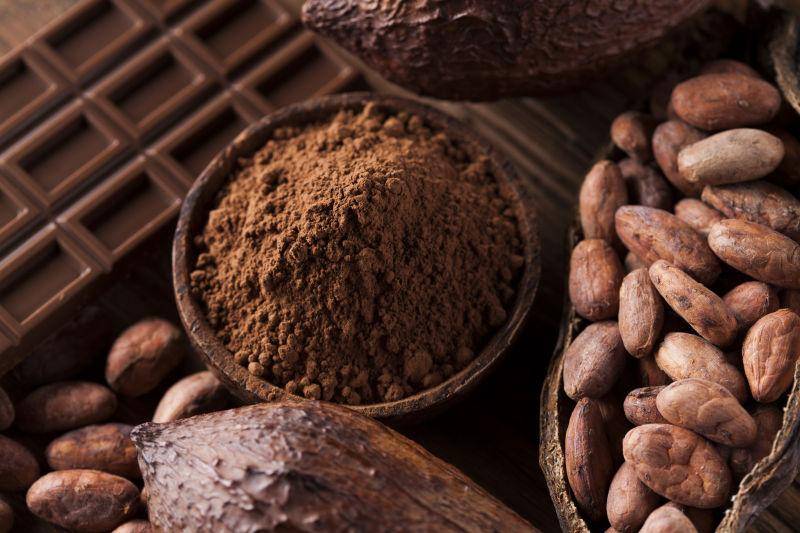
2.3アントシアニン顔料
アントシアニンはアントシアニンとしても知られ、植物の果実、花、茎、葉の細胞の液胞に存在する。植物の水溶性色素の一種である。様々なアントシアニンの分子構造やphの違いにより、赤、紫、青など様々な色が現れます。アントシアニンは資源が豊富で華やかな色をしているだけでなく、顔料王国の大半を構成している。また、高い生理活性を持つ。これらはヒドロキシルドナーおよびフリーラジカル除去剤であり[14]、眼科およびさまざまな血液循環障害の治療に有効である。
2.4クロロフィル顔料
This type of pigment mainly includes chlorophyll and its copper and sodium salts and zinc and sodium salts. Chlorophyll is widely found in the leaves, fruits and algae of higher plants. Chlorophyll has the effects of nourishing the blood, promoting blood production, activating cells, and fighting infection and inflammation. In recent years, it has also been found to inhibit the growth of cancer cells, making it a health-promoting food colouring agent. 亜鉛chlorophyllinナトリウム is used in medicine to treat chronic osteomyelitis, chronic ulcers, skin wounds, leukopenia and other conditions. It is also a good colouring agent and nutritional enhancer in the food industry. In addition to being used as a green pigment and deodorant, sodium copper chlorophyllin also has many physiological functions in medicine. For example, sodium copper chlorophyllin or its derivatives can promote cell metabolism in the body, heal gastrointestinal ulcers and restore liver function. It can be used to treat infectious hepatitis, hemorrhoids, leukemia, uterine disorders, and gastric and duodenal ulcers. It can also enhance hematopoietic function and promote recovery from radiation damage to the body.
2.5他の顔料
主に赤酵母米色素、ウコン色素、紫草色素を指す。
赤酵母米色素は、食品の風味を高め、抗菌、静菌、保存寿命を延ばす効果があるほか、抗菌効果もあります。また、伝統的な漢方薬として、赤色酵母米の色素は、血中脂質、血圧、血糖値を低下させ、腫瘍細胞を抑制し、赤痢、胃の病気を治療する机能を持っています。
ウコン黄色い色素 is widely used in food and medicine because of its strong coloring power and its anti-inflammatory, free radical scavenging, toxin-inhibiting and anticancer properties. It is a rare medicinal herb that can be used for both food and medicine, and is also a spice. Its most important physiological function is antioxidant and related physiological functions.
伝統的な中国医学として、コンフリーは長い間臨床で使用されてきました。血液を冷やし、血液の循環を促進し、解毒し、噴火を促進し、抗炎症、抗菌、抗ウイルス効果があります。そこから抽出される天然色素であるコンフリー色素は、有望な生物色素である。その鮮やかな赤色は、化粧品添加剤として使用され、化粧品の抗菌、抗炎症、エモリエンス、そばかす除去の効果を大幅に向上させることができます。また、フルーツワイン、飲料、スナック、および他の食品に食品添加物として使用して、熱と消毒、抗炎症および抗菌、病気予防および抗がんをクリアする機能を高めることができます。
3自然な色の開発における問題と研究の方向性
Compared with synthetic pigments, natural colors also have some shortcomings that need to be improved: (1) most natural colors are sensitive to light, heat, oxygen, metals, etc., and have poor stability; (2) most natural colors have poor dyeing power and are not easily dyed evenly; (3) natural colors are very sensitive to changes in pH, the hue will change greatly accordingly; (4) there are many types of natural pigments with complex properties. For a single type of natural color, it is relatively specific in application and has a narrow scope of application. Another problem is that many undiscovered pigments may be located in undeveloped land and oceans, and it is difficult to commercially develop them. In view of these difficulties, current research on natural colors is mainly focused on the following three areas: synthesis processes, production techniques and alternative pigment sources. In addition to researching and developing new edible natural colors, it is also necessary to strengthen research on the stability of natural colors and the stabilization techniques for pigments during use.
自然界には微生物が生産する色素が多種多様であり、資源、環境、空間に制約されないという利点があります。したがって、開発と利用の大きな可能性を秘めています。特に、天然色製品は、大量の微生物を培養することによって得られ、生産コストを大幅に削減しながら、環境と生態系のバランスを保護し、資源不足の矛盾を解決し、持続可能な開発と利用の利点を持っています。生産された顔料は、天然色の特徴を持ち、食品、医薬品、化粧品業界で使用することができます。微生物色素はまた、自然な色の開発のための主要な方向性となります。
参照
【1】邓向元、王樹君、李復超、秦歌。天然色資源とアプリケーション[j]。中国の調味料,2006(10):49-53。
【2】張昭君、小栗娟。天然色ソルガム・レッドの開発と応用[j]。穀類、の油及び油脂、2005年(平成17年)(5)-だ。(編集sn)
【3】劉樹興、胡暁軍。ウコン色素の研究[j]。^『日本科学技術史研究』第13巻第3号(4):37-39頁。
【4】丁春美、陶廷憲、武志川。海老殻の総合的利用(1)海老殻からの赤色色素の抽出とその特性[j]。^ a b c d e f g h i『日本の歴史』444 - 444頁。
[5] hawthorne sb, miller dj。環境固体からの有機化合物のsoxhletおよび低・高温超臨界co2抽出効率の直接比較[j]。肛門化学である。^ a b c d e f g h i 1994, 66(22): 4005- 4012。
[6] rozzi n l .トマト加工副産物からのlgcopeneの超臨界流体抽出[j]。の農産物や食品化学の雑誌2002年(平成14年)(9)- 2638 - 2643。
[7] cheez k . k . wong mk . lee h . k .マイクロ波を用いた水中有機汚染物質抽出法[j]。小さい。化学である。^ a b c d e f g h i、1996年、330 - 217頁。
【8】王偉華、虞国平、張立東。リコピンマイクロ波抽出のプロセス条件に関する研究[j]。^『日本近代史』第5巻、中央公論社、2005年、554 - 567頁。
【10】劉儀、寧正祥。monascus pigments and their application in meat products [j]。1999年(平成11年):1号機を設置。
【11】楊歌、李雅。カロテノイド発酵の生産条件に関する研究[j]。1998年(平成10年)8月8日:現在地に移転。
[12] pei lingpeng, hui baodi, jin zonglian, et al。フラボノイドの生理活性と調製技術に関する研究[j]。」。food science, 2004,(2): 203-207。
[13] wang li, yao huiyuan, tao guanjun et al。黒檀の葉におけるフラボノイド色素の抗酸化活性[j]。食品生物科学技术の誌2006年(平成18 25 (4):81-88
[14] howard mm . j . agric。食品化学である。^ a b c d e『官報』第48:48 -599号。


 英語
英語 フランス
フランス スペイン
スペイン ロシア
ロシア 韓国
韓国 日本
日本